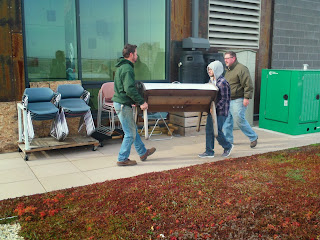This past summer we planted blue corn on CORE/El Centro’s rooftop.
We used a traditional method of interplanting it with beans and squash known as the Three Sisters
Garden. The Corn gives a stalk for the bean to grow while the beans replenish
the soil with nitrogen for the corn. The corn also gives sufficient shade for
the squash to grow.
The Blue Corn we received from Seeds of Change came
from the Hopi tribe, located in Arizona.
The Blue corn, to the Hopi Tribe, is sacred. The corn, is not just food but a symbol of life and tradition. The belief
is that corn was given to them from their gods. For this reason, they perform
ceremonies to honor their gods and pray for longevity for their way of life. The
corn is used in different religious ceremonies, traditions and everyday
activities. One traditional use for the blue corn is in wedding. It is
customary for Hopi women to make Piki bread from several pounds of
blue corn to the spouse’s family before the wedding. For the Hopi,
learning traditional recipes is a blessing from mother to daughter.
 |
| Ready to grind Corn |
 |
| Hand grind to produce dough. |
Then there were to ways to make the shape of the tortilla.


















